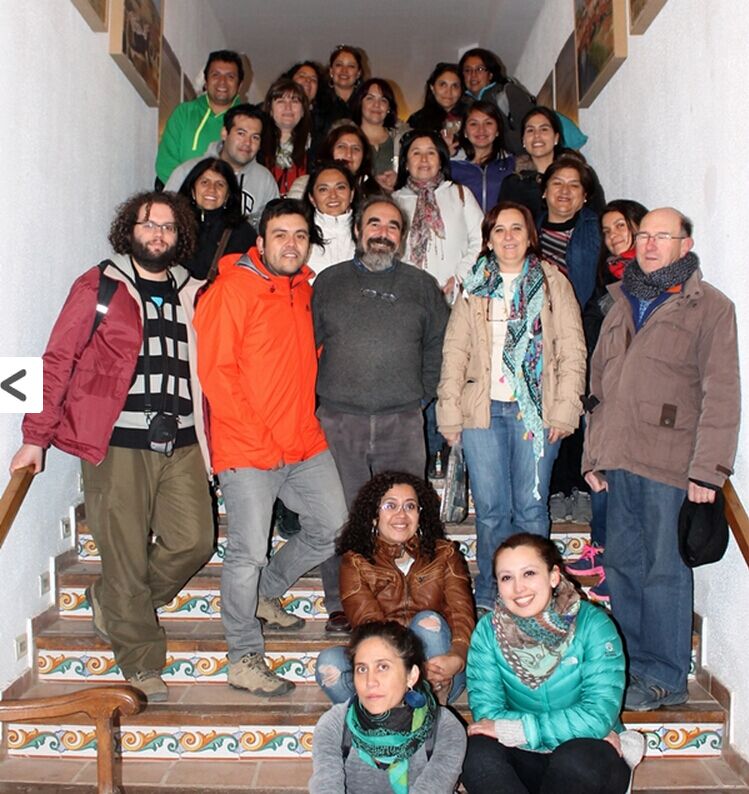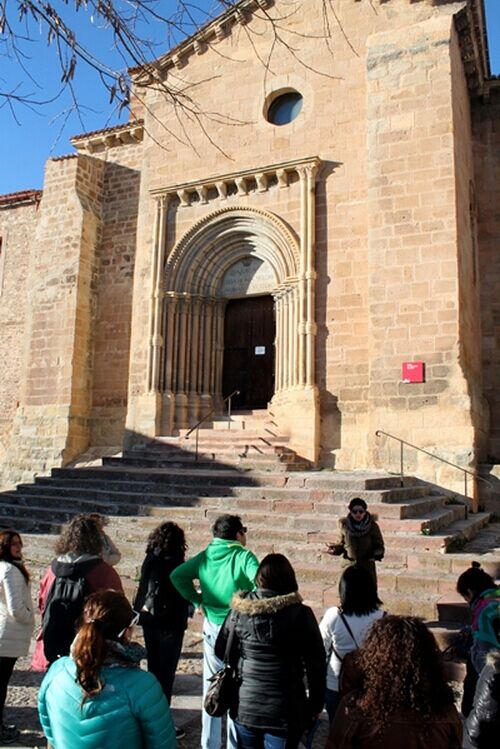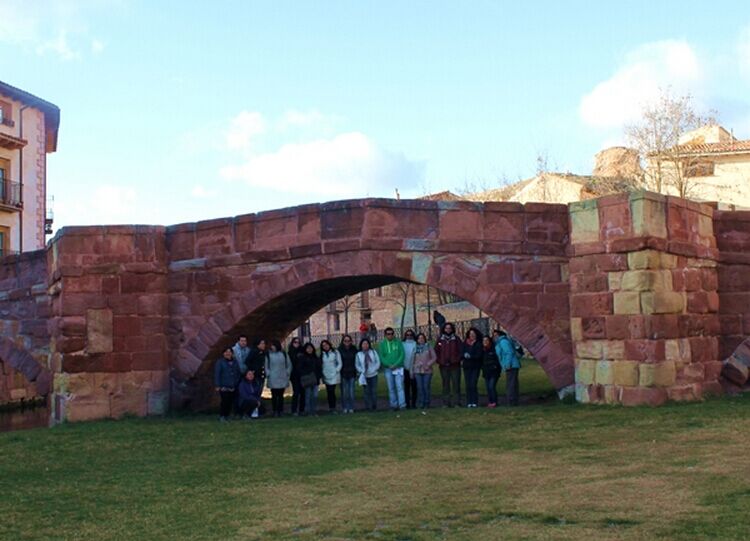A total of 23 Sciences teachers of Chile, accompanied by Amelia Calonge, the University of Alcalá de Henares (UAH) College of Education Dean, visited the Molina de Aragón-Alto Tajo Geopark as part of the curriculum of a training course for updating their knowledge and to obtain a thorough understanding of the Spanish education system.
The Molina de Aragón-Alto Tajo Geopark (Spain) closed an international training program for 23 Sciences teachers of Chile, who have spent the last two and a half months in the University of Alcalá de Henares College of Education for supplementing and updating their knowledge.
These 23 teachers, with 24 others of the mathematics subjet, have been selected among more than 700 teachers in their country for obtaining a grant for this training course which took place during their summer vacation: “The Molina-Alto Tajo Geopark guided tour has been included in the Sciences Programme and was scheduled at the final of the ‘Pasantía’ as they call to this training. Previously, we have provided them with all the necessary knowledge to understand the Geopark geodiversity and biodiversity” explained Amelia Calonge.

“Collaborate with the University of Alcalá de Henares (UAH) and its College of Education Dean, Amelia Calonge, in all educational and training activities developed in the fields of Geology and Paleontology is always an hounor and a privilege for us. One of the Molina-Alto Tajo Geopark main objectives is precisely to promote the activities in collaboration with the educational community, because we have always believed that to inform society of the values our geological heritage is essential for guaranteeing its protection and conservation”, said Juan Manuel Monasterio, Molina-Alto Tajo manager.
During the visit, José Antonio Martínez Perruca, Geopark Scientific Director, showed to the pupils the aragonite “type site”. This mineral was first described in 1788 by German researcher Abraham Gottlob Werner in Molina Aragon, who assumed that this city was in the region of Aragon, so he took the name “aragonite”.
Then, they moved to the Hoz Canyon where they could learn, among other things, the effects of river erosion, the sedimentary rocks and the difference between a sandstone rock and a conglomerate. In Cuevas Labradas, they identified the fossil of bivalves, branchiopods, cephalopods and other molluscs and analyzed the folds formed during the Alpine Orogeny on limestone rocks that were sedimented under a tropical sea during the Jurassic.

By the afternoon, Rocío Andrés, a tourist guide of the Molina de Aragón official tourist office, guided them through the main streets of the city, where they found that the facades of many monuments are built with the same sandstone rock of the Hoz Canyon.
The visit ended at the Molina de Aragón Local Museum, where they were greeted by the Geopark manager, Juan Manuel Monasterio. Science teachers discovered here many of the fossils and materials they had heard in his lectures.
The Molina-Alto Tajo Geopark and its geological heritage has been a very important part of the curriculum of this international training initiative: “Amelia and I have worked hard in the Geopark and we try to spread it whenever we have the opportunity” declared Alberto Lebron (UAH), teacher of this course.
In this sense, the students learned the concept of geological heritage as an important resource for improving geological knowledge, science popularization and protection: “Precisely,in the Geopark there are great examples about the educational use of Geological Heritage ” concluded Alberto Lebrón.
